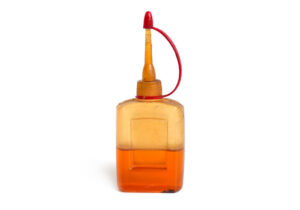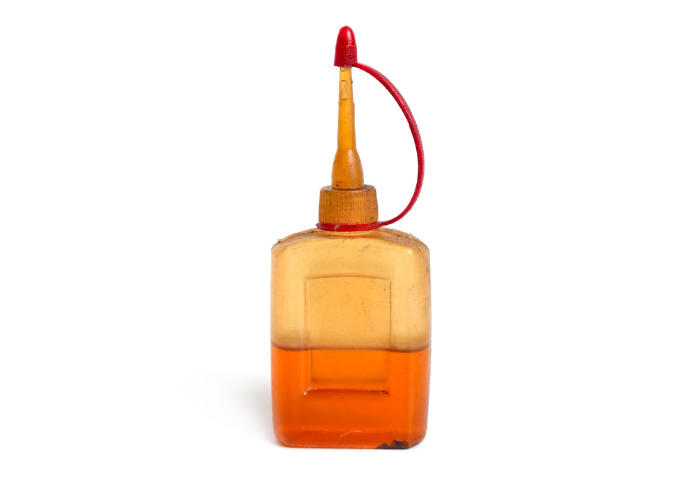 If you are stuck between rows and rows of thousands of oils that seem decent, each more than the last one, and you have no idea what brand to pick out and whom to trust, well, you don’t have to worry anymore!
If you are stuck between rows and rows of thousands of oils that seem decent, each more than the last one, and you have no idea what brand to pick out and whom to trust, well, you don’t have to worry anymore!
You have come to the right place!
For someone who studied crafts for such a long time, I once found myself in the same dilemma, but lucky for you, now you have me to solve yours for you!
I will be telling you all about the sewing oils today, from their types to usage to why and when do you need to oil your sewing set.
So brace yourself for the sewing oil journey I will be taking you with me!
What is sewing oil?
Sewing machine oil is what food is to us.
No matter how good and high class performing your sewing machine is, it cannot go on working without having to need oil.
No tool in this world can function without proper care and maintenance, the same as us. So, sewing machine oil is an important element that stops your machine’s elements from wear and tear.
Now let’s come down to the question of what sewing oil really is.
To make it easy, sewing oil is an oil that is precisely designed and constructed for your sewing machines.
Now, when I say precisely, I mean that sewing oils have ingredients and elements that are near to essential for the working and performance of your sewing machine.
Sewing oils also help you keep the rust away from your machines, another factor that won’t be seen in a normal oil.
I have come across many people who didn’t think anything about sewing oils, but as a selling strategy, indeed, they did regret using the normal oils on their machines later on.
To make sure you don’t go through the same faith. I will be telling you all the signs that your sewing machine needs oil ( the right kind of oil ), so you don’t foresee it ever.
Signs that your sewing machine needs to be oiled
If you are giving proper attention to your sewing machine, I’m sure you already are aware of the signs that your sewing machine gives you when it’s in need of lubrication.
If you, by any means, missed that chance, I am here giving you a list of 4 signs that directly translate that your sewing machine needs lubrication/oiling.
High fiction
If your sewing machine is in need of oiling, the chances are that it will start creating fiction between its elements.
You will feel the material and construction inside of the machine grinding up against each other in a bad way.
This straight-up means that your sewing machine has no fluid left and is working dry.
Wear and tear
Once the fiction gets high, and the metals inside your sewing machine start to grind against each other because of the lack of lubrication and too much dryness.
Wear and will take place inside your sewing machine, which means that the material inside your sewing machine will eventually start to tear off and fall apart.
Downtime
Another one of the major signs of your sewing machine that needs oiling and lubrication is that it will start having downtime.
One minute you will be working on your sewing machine; the next, it will be having a downtime.
It can be frustrated to work after so many downtimes, especially when you have no idea whether this downtime is for 5 minutes or 5 hours.
Less to none peak performance
If your sewing machine is not getting enough amounts of lubrication every now and then, it is obvious that the dryness is going to affect its performance if you see that your sewing machine is not working up to its potential and seems old and worn out.
Trust me; it’s not getting old and worn out; it just needs its food to function properly once again.
Types of Sewing Oil
There are three main types of oils that are used in almost every kind of lubrications
Natural Oil
Natural oil is the line of oil that is usually made up of oils like ester oils, silicone, and jojoba oils.
But only if they are natural does not mean that this also makes them better.
Natural oils, in-fact, are not as effective as other oils. When using natural oils, sewing machines must be used with care, or else your sewing machine may suffer from great damage.
Mineral Oil
Derived from petroleum compounds, these oils have low viscosity, which means that they are thin liquids.
These oils are also colorless; most of the sewing machine oils are basically mineral oils. Mineral oils are also said to be quite effective.
Synthetic Oil
Synthetic oils are more of an artificial yet expensive replacement of mineral oils. Synthetic oils can be safely used on painted, rubber, and plastic surfaces.
What kind of sewing oil is safe to use?
Mineral oils are said to be the safest ones for the lubrication of sewing and other machines as well.
Since they are highly effective and are made from a petroleum compound, mineral oils are also ought to be the most effective ones.
How to use a sewing oil
- Always make sure to unplug your sewing machine before you start to oil it.
- If you want to lubricate it properly, make sure you disassemble your sewing machine completely first.
- Before applying the sewing oil, use a metal brush to brush off any dirt or lint that might work on your sewing machine.
- Lastly, apply your sewing oil but make sure you don’t apply too much amount of it. In case you do end up applying a lot of oil, use a cloth to absorb the unwanted oil.
- Before applying the oil, make sure it is not expired.
Read Also:

